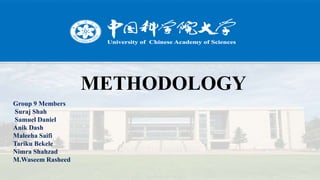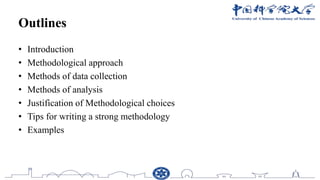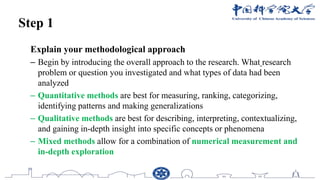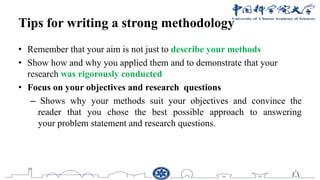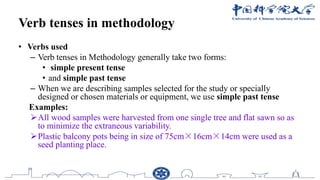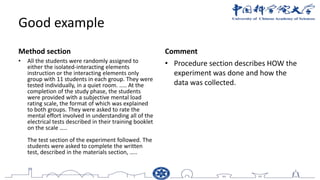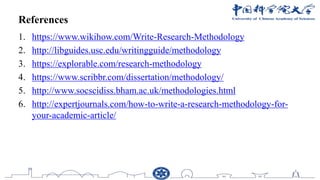This document outlines the methodology used in a research study. It describes the seven group members who conducted the research. It then discusses what a research methodology is and why it is important to have a strong methodology. The document outlines the typical steps for writing a methodology, including explaining the methodological approach, methods of data collection, methods of analysis, and justifying methodological choices. It provides tips for writing a rigorous methodology and discusses the appropriate verb tenses to use.
